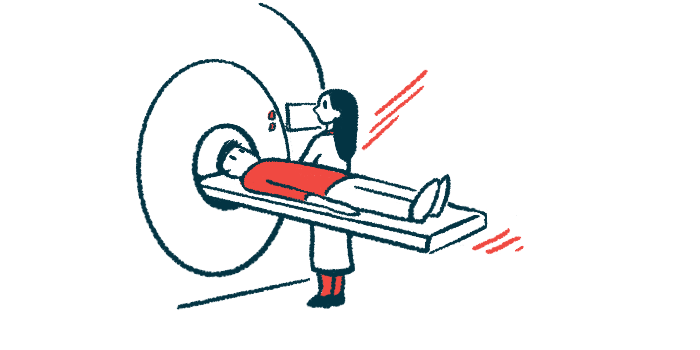MRI method detects myelin repair with over-the-counter antihistamine
Results seen in corpus callosum, suggesting new standard for remyelination investigations

The over-the-counter antihistamine clemastine has demonstrated an ability to repair myelin, the protective coating on nerve fibers that’s damaged in multiple sclerosis (MS), according to an analysis of MRI data from the ReBUILD clinical trial.
The changes in myelin were examined with a noninvasive MRI method that more accurately reflects myelin repair than other measures. The technique can be applied in clinical trials to measure how effective therapies are that promote myelin repair and prevent disability.
“This is the first example of brain repair being documented on MRI for a chronic neurological condition,” Ari Green, MD, study co-lead and a physician-scientist at the University of California San Francisco, said in a university news release. “The study provides the first direct, biologically validated, imaging-based evidence of myelin repair induced by clemastine. This will set the standard for future research into remyelinating therapies.”
The MRI study, “MWF of the corpus callosum is a robust measure of remyelination: Results from the ReBUILD trial,” was published in PNAS.
A feature of MS is a self-reactive inflammatory response that targets and damages myelin, an insulating layer, or sheath, around nerve fibers that helps quicken the speed of electrical impulses.
A number of therapies have been developed to suppress the altered immune response and protect myelin from further damage. There are no approved therapies that can restore the myelin sheath, which could halt or reverse disease-related processes and prevent long-term disability.
Several myelin-repairing candidates are under development, but a major hurdle is the absence of validated imaging methods that show restoration.
MRI techniques have been developed to measure the myelin water fraction (MWF), the ratio of water trapped within the thin layers of myelin to the total water content in brain tissue, most of which can flow more freely.
Changes in the structure of myelin, as seen in MS, alter MWF signals and can act as a proxy for myelin repair. The method hasn’t been demonstrated for myelin-repairing treatments, however, mainly due to a lack of such therapies, prompting researchers at the University of California San Francisco to examine MRI data from 50 adult patients who participated in the now-complete Phase 2 ReBUILD trial (NCT02040298).
Evaluating clemastine in remyelination
The placebo-controlled study evaluated clemastine in people with relapsing forms of MS who were on stable immune-modulating disease-modifying therapies. Results showed it helped speed up electrical signals along the optic nerve that connects the eyes to the brain.
Treatment-related improvements were also seen in the ability to detect changes in visual contrast, but they didn’t reach statistical significance. Although the effect was modest and carried well-known side effects such as drowsiness, the findings suggest clemastine could repair myelin around these nerve fibers.
“Clemastine can only be partially effective at the doses we can use. It can be sedating, which may be especially undesirable in patients with MS,” Green said. “We are hopeful better medications will be developed, but clemastine has proven to be the tool to show remyelination is possible.”
Despite ReBUILD’s findings, whole brain MWF measurements showed no changes with treatment. The researchers then focused on the corpus callosum, a highly myelinated area of white matter that connects the two sides of the brain.
In the trial, half the patients were randomly assigned to receive clemastine for three months, while the other half were given it in the third through fifth months. Before treatment, the groups’ mean MWF values in the corpus callosum were similar (0.087 vs. 0.088).
At three months, the mean MWF increased in those on clemastine (to 0.092) and continued rising two months after the treatment was stopped (to 0.094), indicating myelin repair. Those taking a placebo in the first three months saw their mean MWF value drop to 0.082. With treatment, the value increased up to 0.086.
No significant difference in MWF was observed at three months when the MRI focused on areas of myelin damage, called lesions, suggesting substantial myelin repair occurred in the normal-appearing white matter outside of lesions.
“We present the first positive identification of an MRI correlate of therapy-induced remyelination in a clinical trial (ReBUILD), with a technique that can be employed in a clinically feasible time,” the researchers wrote, adding the findings support “corpus-callosum MWF as a standard for clinical programs investigating remyelinating therapies.”







